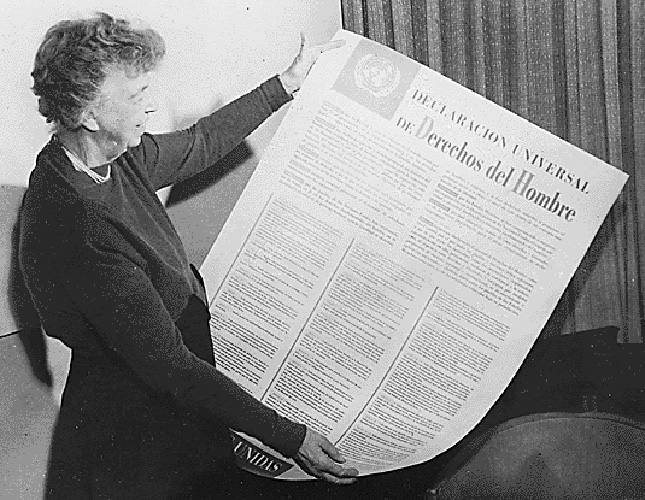
Treating other people fairly seems like a simple task. Do right by your neighbor, don’t discriminate, help those in need.
But when it comes to global human rights, things get complicated. How can we assess whether governments of entire nations are treating their citizens in a just manner?
Susan Randolph, associate professor of economics in the College of Liberal Arts and Sciences, and co-authors Sakiko Fukuda-Parr and Terra Lawson-Remer at The New School have produced a metric that measures how well countries are meeting their commitments to ensure their people’s basic economic and social rights.
In 1948, the United Nations created a Universal Declaration of Human Rights, a document expressing the rights to which all human beings are inherently entitled. A series of treaties – or, in human rights lingo, covenants – in the 1960s turned these rights into international law.
Providing all of the rights guaranteed in the International Covenant on Economic, Social, and Cultural Rights is difficult, says Randolph, and beyond the means of most countries. But all countries that have ratified the Covenant – 160 countries to date – are obligated to work toward them over time and to commit the maximum possible of their available resources.

But interpreting what this means in practice, says Randolph, has proven problematic.
Various indices have been used over the years to assess the extent to which these rights are realized across the globe. But the methods have focused only on self-reported outcomes from each country’s government.
“Countries have been able to set their own benchmarks until now, which in practice has made the principle non-operational,” Randolph says. A country that sets its own goals, she points out, will surely set them so they will meet or exceed them.
The index developed by Randolph and her co-authors, called the Index of Social and Economics Right Fulfillment, or SERF, creates benchmarks that are feasible for countries with different resource capacities. This, says Randolph, makes it possible to hold countries accountable and take countries to task for failing meet their commitments under the International Covenant on Economic, Social, and Cultural Rights.
“With this index, we can assess what countries are capable of achieving, given their resources,” Randolph says.
In addition to organizing and teaching workshops for non-profits around the globe about the use of this index, Randolph has received a $235,000, three-year National Science Foundation grant to understand the relationship between economic growth and the fulfillment of basic economic and social rights.
Although per capita income growth has the potential to improve the lives of many people, Randolph explains, it may be biased toward certain parts of the population, and some people may miss out on any improvements. If this were the case, then in theory, the state in question could be in violation of international law.
“There’s a definite tension involved,” says Randolph. “States are going to be able to make more improvements if they have larger resource capacities. But on the other hand, focusing just on per capita income growth does not necessarily mean doing the most you could to improve basic human rights. A country that falls substantially short would have to defend itself to the United Nations Committee on Economic, Social and Cultural rights.”
Randolph and colleagues have published information about the SERF index in the Journal of Human Rights (An Index of Economic and Social Rights Fulfillment: Concept and Methodology, and Economic and Social Rights Fulfillment Index: Country Scored and Rankings) and on their own web page.


